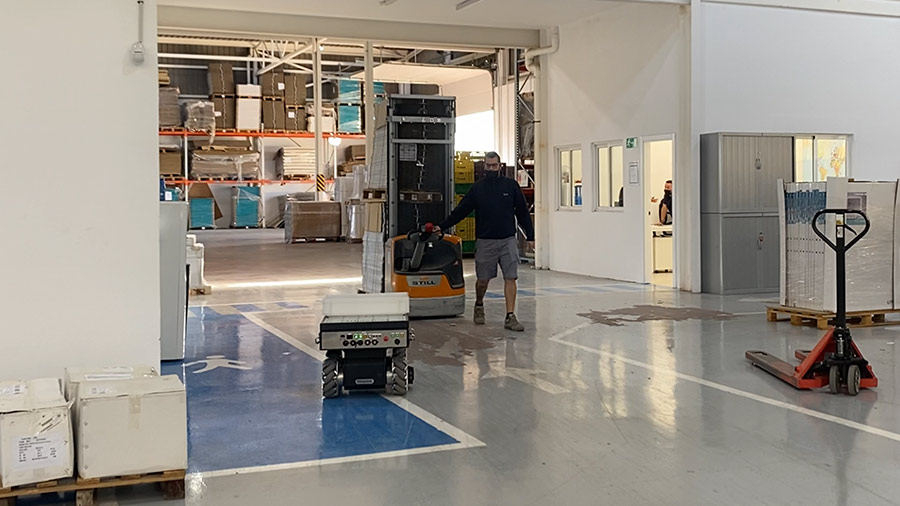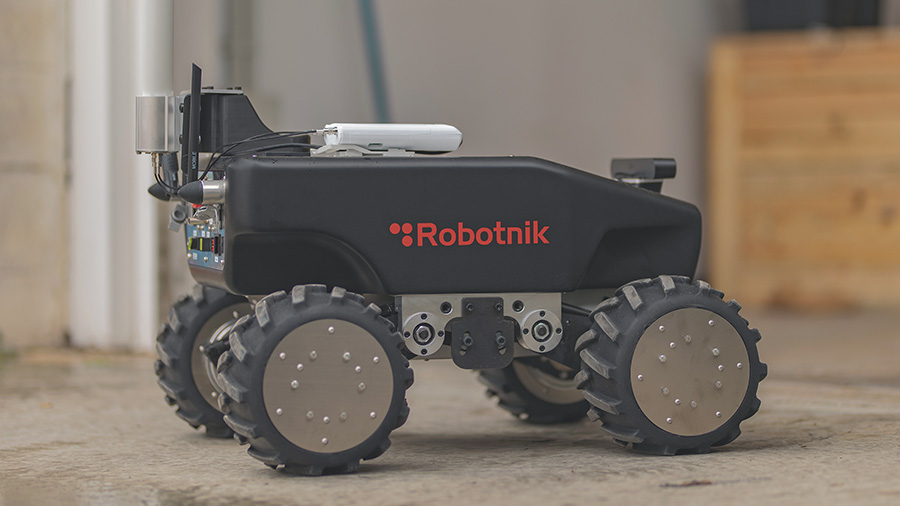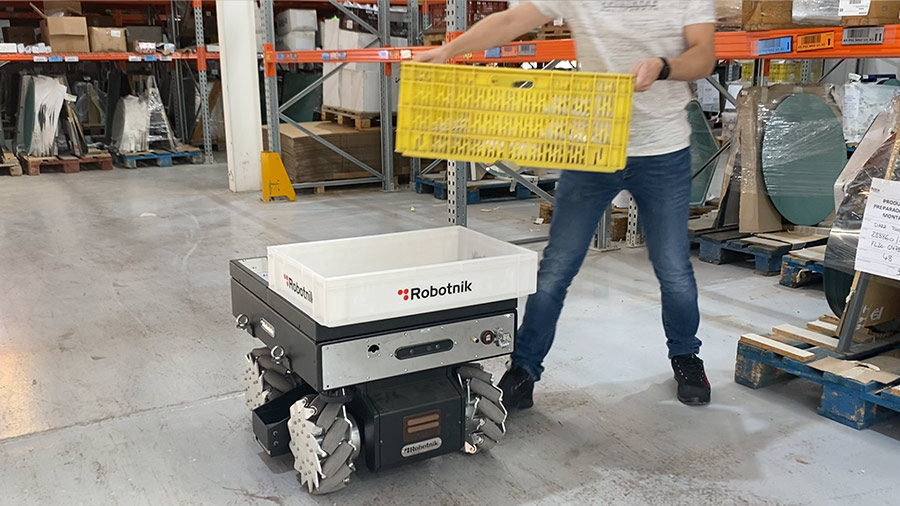There is still some unclear points about what is an AGV and what is an AMR. Although there are some similarities between a mobile guided vehicle and an autonomous mobile robot, this article shows the differences between Automated Guided Vehicles (AGV) and Autonomous Mobile Robots (AMR).
AGVs and AMR have specific characteristics that make them useful for different applications. It cannot be determined that AMRs are better than AGV, but rather that each is suitable for the given production context.
There are certain areas where the terms AMR and traditional AGV are used interchangeably. Although an AGV is not really a robot, but a robotic device, as it lacks the autonomy to determine or redefine its own route. By contrast, an AMR can navigate without external guidance. In other words, the AMR has freedom of navigation and decision making.
For example, if the robot is transporting any material from one point to another and encounters a pallet head-on, it will avoid the obstacle and redefine its route.
Main difference
By checking the automated guided vehicle definition, you might find that it is not the same as an AMR. An autonomous mobile robot is not simply a programmed machine. The AMR is one that, in addition to the initial programming, has a certain degree of independence to make decisions in the middle of the work environment, without the need for human intervention.
That is to say, not every industrial machine is an AMR because not every machine has the capacity to make decisions based on the information it perceives (unforeseen obstacles, for example).
The main difference between an AGV and an AMR is that AMRs use free navigation by means of lasers, while AGVs are located with fixed elements: magnetic tapes, magnets, beacons, etc. So, to be effective, they must have a predictable route.
In warehouses and places where the work environment is shared with humans, AMRs work better due to their dynamism and efficiency in sharing tasks. In addition, autonomous mobile robots have much more advanced software and hardware, expanding their possible applications: inspection and surveillance tasks, error detection, transport of materials, storage and distribution…
And how does it perceive this information? Robotnik integrates in its robots sensors and various components that receive, process and analyse data in real time and act accordingly: elevation system, different cameras, lasers or other components.
The flexibility of AMR to work in different locations means, for example, not changing the layout, easier scalability of the number of units and work zones or a clear definition of ROI (especially measurable in small projects that can be scaled up later). Moreover, AMR does not need a specific infrastructure to move around, but can be implemented in any space.
AGV are the predecessors of AMR and have been evolving since the 1950s. They are typically used for the transport of heavy loads, but run on a rail or belt and with a predetermined route. Another feature of the most advanced AGVs is that they are capable of detecting obstacles, but not of re-routing: when encountering an obstacle, the robot will stop.
What is AGV and AMR used for?
Industrial environments are complicated, changing and full of obstacles. It is essential to be able to ensure the safety of operators.
Moreover, AMR and AGVs have different navigation systems and therefore behave and interact differently.
AGVs are suitable for workspaces with a large number of fixed tasks, as they require installation of the infrastructure through which they will move.
In collaborative and dynamic environments where both humans and machines are needed, customers often opt for AMRs because of their ability to adapt to a changing environment. A mobile robot receives, understands and manages data from the environment in real time, so it is more flexible and has a wider working area.
How to determine the best solution for a company?
By evaluating the environment, the scenario in which it will be deployed and the specific tasks to be performed by the AMR.
AGVs and AMRs have different applications. In general, AGVs are more effective for less complex tasks such as transporting raw materials, packaging, sorting or delivery. But always with predetermined tasks and routes.
AMR is the best choice for tasks that require Artificial Intelligence. In fact, it is AI that makes these robots have infinite applications in different sectors: logistics, inspection and maintenance, agriculture or construction, among others.
In conclusion, Industry 4.0 is moving towards increasingly intelligent automation in which autonomous robots have become a key tool for Smart Factories.




